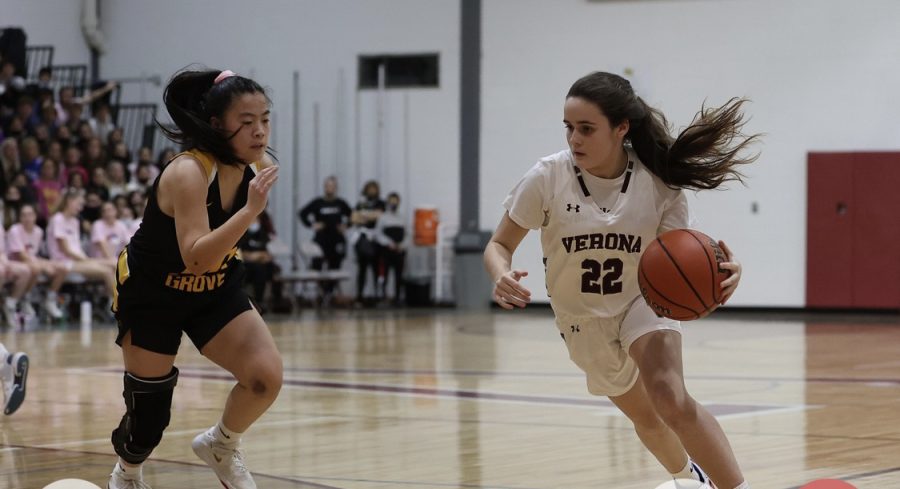STRESSDEMIC: How The Covid-19 Pandemic Has Affected Students
Humanity has had its fair share of pandemics over the years, a few notable ones being the Black Plague and the Spanish Flu, two pandemics that have been well researched since the inception of the novel coronavirus presently at hand, COVID-19.
Looking at the numbers, the Black Plague hit the world population hard, killing an estimated 25 million people in the years between 1346 and 1353, approximately seven percent of the world’s population. In comparison, the Spanish flu took a significant number of lives, killing approximately 50 million people (3.3 percent of the world population at the time). When looking at our novel coronavirus from this point of view, we see remarkably low numbers compared to previous notable pandemics.
To date, the novel coronavirus has taken the lives of 1.65 million people, approximately 0.02 percent of the world’s population. In terms of numbers relative to other pandemics, the coronavirus seems like a minor threat. With this in mind, one might believe that the extent to which we have gone in order to defend both ourselves and those around us from contracting this illness is excessive. On the contrary, it was only strict observance of mask policies and six-feet-separation orders that allowed us to minimize COVID deaths.
For students, what initially started as a 3-week hiatus from in-person schooling turned into a 9-month long stretch of online education. Student stress levels have been through the roof as attempts have been made to create a virtual classroom environment that works for the benefit of both students and teachers. This has been a weighty predicament for school administrators. Blending a traditional school schedule with our new normal without creating an experience plagued with inconsistencies and irregularities is nearly impossible.
The hybrid schedule that developed at VHS as a result of various talks among administrators came to be unofficially known as the “Dining Room Table” model. It was the idea that only a small portion of the student body would attend in person, and most would be attending from their “dining room table” while being logged into a Google Meet. Those who were physically present in the classroom were generally still required to log into the Google Meet, and most found that all the work that could have been done at home would be the same work assigned to them in the classroom. So for students, at-home education with a set schedule allowed for more efficient management of time while attending school did not seem to offer an advantage.
Students staying home were able to get better sleep, precisely plan out how long their morning endeavors would take, log into class at exactly the starting time and leave at exactly the end. Daily life for students became somewhat normal. In the trying times that we are in, normality is no small feat. Of course, normalcy does not come down to a single facet of education. Maintaining consistent levels of homework would also go a long way in terms of reducing student stress. The administration has strongly reinforced the importance of no more than 30 minutes of homework per day, per subject. However, the administration goes on to decree that the distribution of homework is still up to the discretion of the instructor or teacher. Furthermore, this does not even apply to all students, only those taking on-level courses and honors courses. AP classes have no restrictions on homework intensity or length, and many students are participating in such classes.
With the AP standards being held constant and the school standards up in limbo, it is rather difficult for a student to find academic comfort and stability in these circumstances. Not only that, but students are expected to perform similarly to previous circumstances. Being placed in front of a screen for nearly four continuous hours followed by a supplementary two hours in the afternoon is heavily straining, both physically and mentally especially when the learning environment is non-conducive. Teachers struggle to get students to participate in class; students are generally too fatigued from the long hours to be able to engage the teacher in a conversation on the subjects being discussed.
While the hybrid schedule students have to be concerned with whether or not they will be going into school on a given day based on their “cohort,” as well as the various considerations associated with navigating the building and maintaining proper distance. Of course, while it goes without saying that students would be safer if they were to stay at home, it is also true that the classroom environment is not nearly as stimulating.
Decisions made in order to better the learning environment for those in the building are generally at a detriment to those at home, an example of which is the new camera hardware. Audio that is spoken at any part of the classroom can now be heard by those at home, although the teacher is left with a predicament: how to properly utilize this expanded functionality. From personal experience, it is evident that teachers struggle to be able to work alongside this new equipment, whether it be switching video sources or constant repositioning of the camera. Hardware isn’t the end of the problems. In order for students to be allowed into the building, all the windows in the classroom must be opened in order to allow for proper airflow and to limit exposure. Of course, as the exterior temperature fluctuates, the sustainability of such a concept falls into question. With temperatures falling below freezing, how will students be expected to learn? How will teachers be expected to teach? Without proper answers, there is no way for students, or teachers for that matter, to be comfortable with the current situation.
The “new” schedule that is currently in place, being a four-class morning followed by lunch and two more classes, is not particularly helpful when it comes to answering questions. The only thing that it does accomplish is giving students more classes, more screen time, and more work, all things that students had previously complained about being in excess.
As students, many of us feel there is not much that can be done in the ways of speaking up against these changes.A recent petition aimed at changing the current situation was an attempt to represent the viewpoint of the student body. At the time of this writing, there are over 500 students that have signed the change.org petition created by Stefano Farro, a VHS junior in the high school.. The administration has not acknowledged this petition, and it seems to have begun to lose steam over the last few weeks.
My intention was not to end on a negative note, although with AP standards remaining high and students expected to excel in difficult circumstances, an end to the stressdemic seems to be more of a dream than a reality, a dream of normalcy. But with all dreams, as is true here, one has to wake up.










Milo Attal • Jan 21, 2021 at 3:23 pm
As another studednt at VHS, I’d like to show my support of David Sidrak and Stefano Farro. They spoke out against a system that they didn’t like, and their impact shows. Thank you, and don’t get discouraged